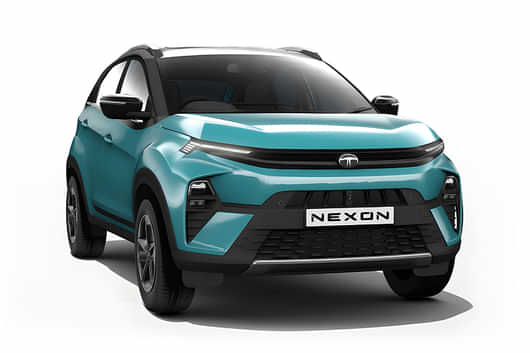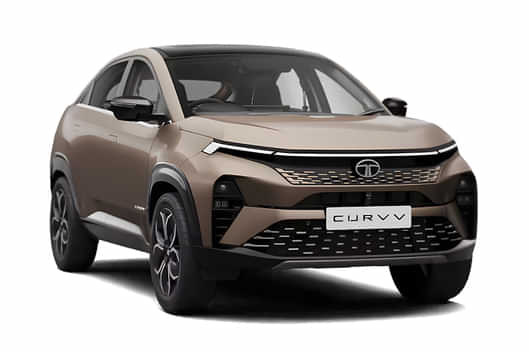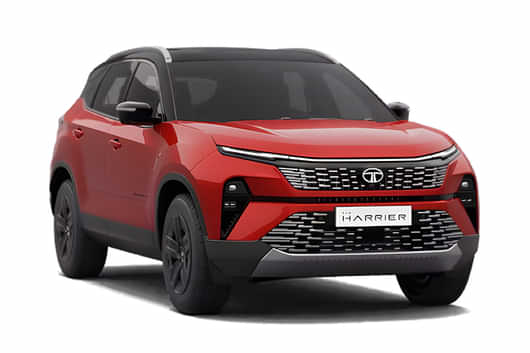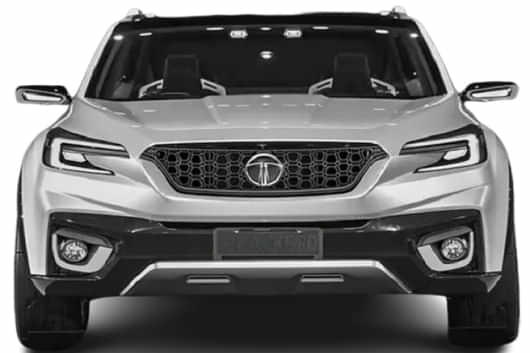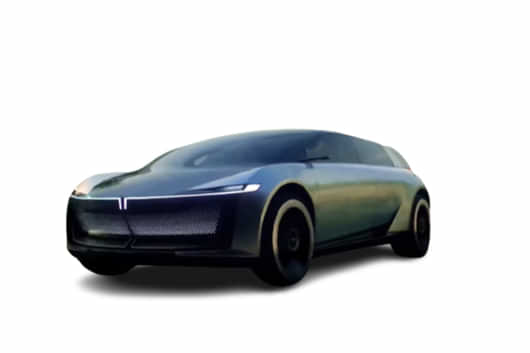
KEY HIGHLIGHTS
- Tata Harrier EV: Premium electric SUV unveiled.
- Mahindra XEV 9e: Futuristic coupe-like design.
- Harrier EV: 390.5 bhp, 6.3s 0-100 kmph.
- XEV 9e: 656 km range, triple-screen layout.
- Harrier EV: Rs. 21.49 lakh starting price.
Tata Harrier EV Vs Mahindra XEV 9e: Tata Motors has officially taken the wraps off the highly anticipated Harrier EV, marking its entry into the premium electric SUV space. Positioned as the brand'S fifth electric vehicle in India, this all-new SUV combines the rugged appeal of the ICE Harrier with modern EV tech. But the Harrier EV doesn't enter a vacuum - its most direct competitor, the Mahindra XEV 9e, already enjoys significant attention in the market.
Both SUVs are tech-laden, powerful, and redefine the electric SUV experience for Indian consumers. So, how do they compare? Here's an in-depth look. Before moving ahead, make sure you join our 91Wheels WhatsApp Community to stay updated on the latest automotive news.
Read more: VinFast Ineligible for Tax Benefits on Imported EVs Under India's New Policy
Tata Harrier EV Vs Mahindra XEV 9e: Design
Tata Harrier EV

Tata, on the other hand, has taken an evolutionary approach with the Harrier EV. While the silhouette closely mirrors the ICE-powered Harrier, there are clear EV-specific tweaks. The front grille is now blanked out, signaling its electric nature, and the bumpers have been revised for a cleaner and more aerodynamic appearance. The addition of new alloy wheels, a connected light bar at the rear, and subtle cosmetic changes help the Harrier EV look fresh without straying too far from its roots.
Mahindra XEV 9e

The Mahindra XEV 9e stands out as a purpose-built electric SUV with a design that is futuristic yet aggressive. Thanks to its coupe-like silhouette, sloping roofline, and flush-mounted door handles, the XEV 9e looks like a proper concept car brought to life. The full-width LED DRL up front, bold alloy wheels, and muscular proportions give it a distinct road presence. Its design doesn't try to mimic ICE SUVs - instead, it charts its own visual identity that screams modernity and innovation.
Tata Harrier EV Vs Mahindra XEV 9e: Features
| Feature | Tata Harrier EV | Mahindra XEV 9e |
|---|---|---|
| Infotainment Screen | 14.5-inch Samsung Neo QLED | Triple-screen layout (includes passenger display) |
| Instrument Cluster | 10.25-inch digital | Included in triple-screen layout |
| Surround View Camera | 540-degree camera | 360 degree camera |
| IRVM | Digital IRVM with DVR | Digital IRVM |
| Front Seats | Ventilated, electrically adjustable with memory | Ventilated |
| Sound System | 10-speaker JBL sound system | 16-speaker Harman Kardon system |
| ADAS & Airbags | Level 2 ADAS, 7 airbags | Level 2+ ADAS, 7 airbags |
Tata Harrier EV
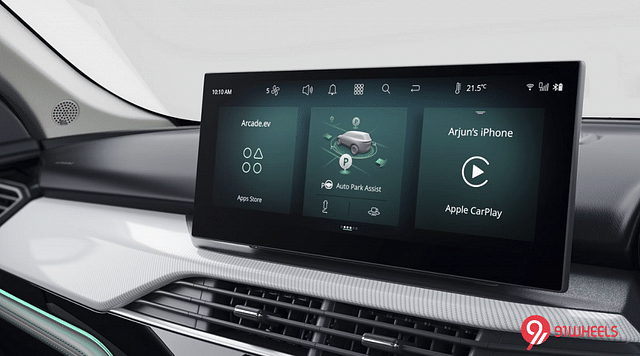
Tata hasn't held back when it comes to the set of features. The Harrier EV debuts a massive 14.5-inch Neo QLED infotainment screen co-developed with Samsung, paired with a crisp 10.25-inch digital instrument display. Other premium touches include powered and ventilated front seats, a digital IRVM with DVR recording, a 540-degree camera, and an innovative self-parking system. The SUV also features six terrain modes and a Level 2 ADAS suite. Safety is well addressed with seven airbags and a robust structural design.
Mahindra XEV 9e

Mahindra has packed the XEV 9e to the brim with tech and convenience. It features a triple-screen layout on the dashboard - a digital instrument cluster, a central infotainment screen, and a dedicated screen for the front passenger. The panoramic sunroof is illuminated, giving the cabin an upmarket feel. The audio experience is premium too, thanks to a 16-speaker Harman Kardon system. In terms of safety, the XEV 9e boasts Level 2+ ADAS, a 5-star BNCAP safety rating, and seven airbags, among other active and passive features.
Tata Harrier EV Vs Mahindra XEV 9e: Interior
Tata Harrier EV
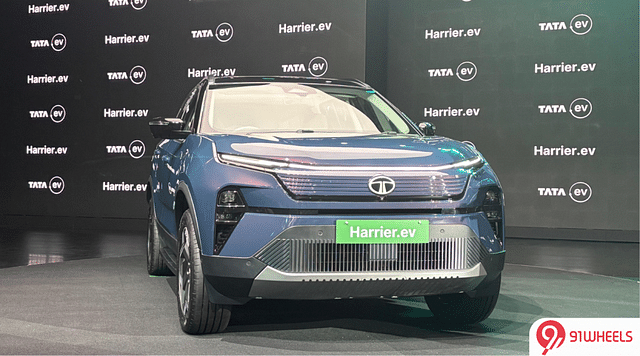
The Harrier EV brings a sense of solidity and premiumness. While it might not have screens for rear passengers, it offers segment-first features like a powered boss mode that allows rear passengers to electronically move the front co-driver seat forward to free up legroom. The front seats come with memory and ventilation functions, while wireless charging and premium upholstery add to the cabin's comfort. Tata's improved suspension setup in the Harrier EV also enhances ride quality, especially over rough terrain.
Mahindra XEV 9e

Step inside the XEV 9e, there's a cabin that offers a mix of luxury and practicality. Ambient lighting runs throughout the interior, including the panoramic sunroof. Rear passengers can enjoy their own entertainment screens, while the inclusion of multiple Type-C 65W fast charging ports and dual wireless charging pads enhances the tech quotient. The spacious cabin provides ample legroom, headroom, and shoulder space, making it ideal for family use. Twin-zone climate control and a high-efficiency air purifier further boost comfort.
Powertrain & Performance
| Specification | Tata Harrier EV | Mahindra XEV 9e |
|---|---|---|
| Battery Packs | 65 kWh & 75 kWh | 59 kWh & 79 kWh |
| Drivetrain | FWD (65 kWh), AWD/QWD (75 kWh) | Rear-wheel drive |
| Power | Up to 390.5 bhp (Dual Motor) | Up to 282 bhp |
| Torque | 504 Nm | 380 Nm |
| 0-100 km/h | 6.3 seconds | 6.8 seconds |
In the battle of electric powertrains, both Tata and Mahindra have opted for two battery pack options - but the configurations and outputs vary significantly. The Tata Harrier EV is offered with a 65 kWh battery for the standard single-motor configuration and a larger 75 kWh battery in the dual-motor, all-wheel-drive version. The smaller battery setup generates approximately 234.7 bhp and 304 Nm of torque. However, the real showstopper is the dual-motor variant that produces a combined 390.5 bhp and 504 Nm of torque. This version enables the Harrier EV to sprint from 0 to 100 kmph in just 6.3 seconds, making it one of the quickest electric SUVs in its class.
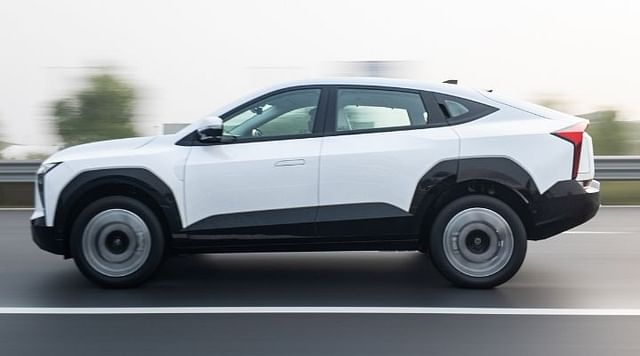
On the other side, the Mahindra XEV 9e offers a slightly smaller 59 kWh battery and a larger 79 kWh unit. With the smaller battery, you get a rear-wheel-drive layout producing 228 bhp and 380 Nm, while the top-spec variant with the 79 kWh pack pushes out 282 bhp, maintaining the same torque figure of 380 Nm. It takes 6.8 seconds to hit 100 kmph from standstill. While the XEV 9e may lack the all-wheel-drive punch, it still delivers respectable performance and prioritizes efficiency and refinement.
Overall, if sheer power and acceleration are what you are after, the Harrier EV's AWD setup gives it a clear advantage. But the XEV 9e counters with smoother rear-wheel dynamics and better range figures in real-world conditions.
Pricing
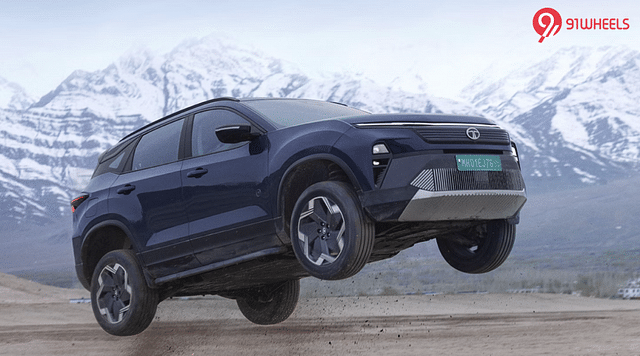
Tata has launched the Harrier EV at an introductory ex-showroom price of Rs. 21.49 lakh. Although variant-wise pricing is yet to be revealed, the base price undercuts Mahindra's offering, which starts at Rs. 22.65 lakh (ex-showroom) and goes up to Rs. 31.25 lakh. Notably, Mahindra includes the cost of the home charger in its pricing, while Tata hasn't disclosed that detail yet. Regardless, in terms of entry price, Tata has taken a more aggressive stance.
Dimensions

Dimensionally, the Mahindra XEV 9e is longer, with an overall length of 4789 mm compared to the Harrier EV's 4607 mm. However, the Harrier EV is both wider (2132 mm vs. 1907 mm) and taller (1740 mm vs. 1694 mm), offering a more commanding stance. The Mahindra SUV does gain an advantage in wheelbase at 2775 mm - slightly more than the Harrier's 2741 mm - translating to more cabin room.
When it comes to boot space, the XEV 9e leads the pack with 663 litres of rear cargo space and a 150-litre frunk. In comparison, the Harrier EV offers 502 litres of boot space and a smaller 35-litre frunk. If practicality and luggage space are priorities, Mahindra takes the cake here.
Range
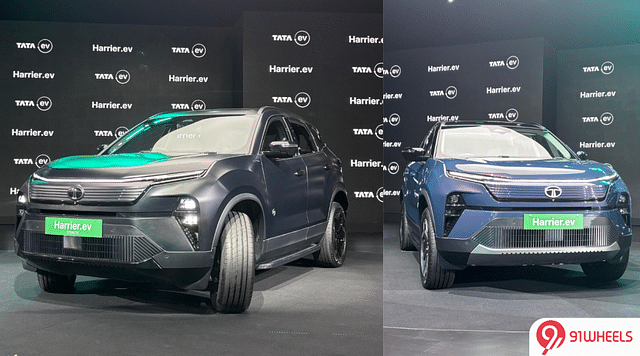
In terms of range, the Mahindra XEV 9e shines with its long-distance capabilities. The 59 kWh version is rated for 542 km on a single charge, while the larger 79 kWh battery stretches the range to an impressive 656 km.
The Harrier EV, in its 75 kWh avatar, has a claimed MIDC range of 627 km. However, Tata also shares its internal testing figures under the C75 standard, which suggest a real-world range of 480-505 km. While Tata emphasizes performance and capability, Mahindra's focus on higher range may appeal to those with longer commutes or highway usage in mind.
Read more: Delhi Government Announces Ban on These Vehicles From November 1: Details
Verdict
The Tata Harrier EV brings aggressive styling, segment-leading power, and the thrill of AWD dynamics to the EV segment. It's a bold move from Tata, especially for those looking for an engaging driving experience and a well-rounded premium SUV. Meanwhile, the Mahindra XEV 9e offers longer range, a futuristic design, and an opulent cabin with tech that feels ahead of its time.
Choosing between the two comes down to what you prioritize: performance and AWD grip (Harrier EV), or tech-loaded interiors and longer range (XEV 9e). Either way, Indian EV buyers are now spoiled for choice and that's a great sign for the future.












